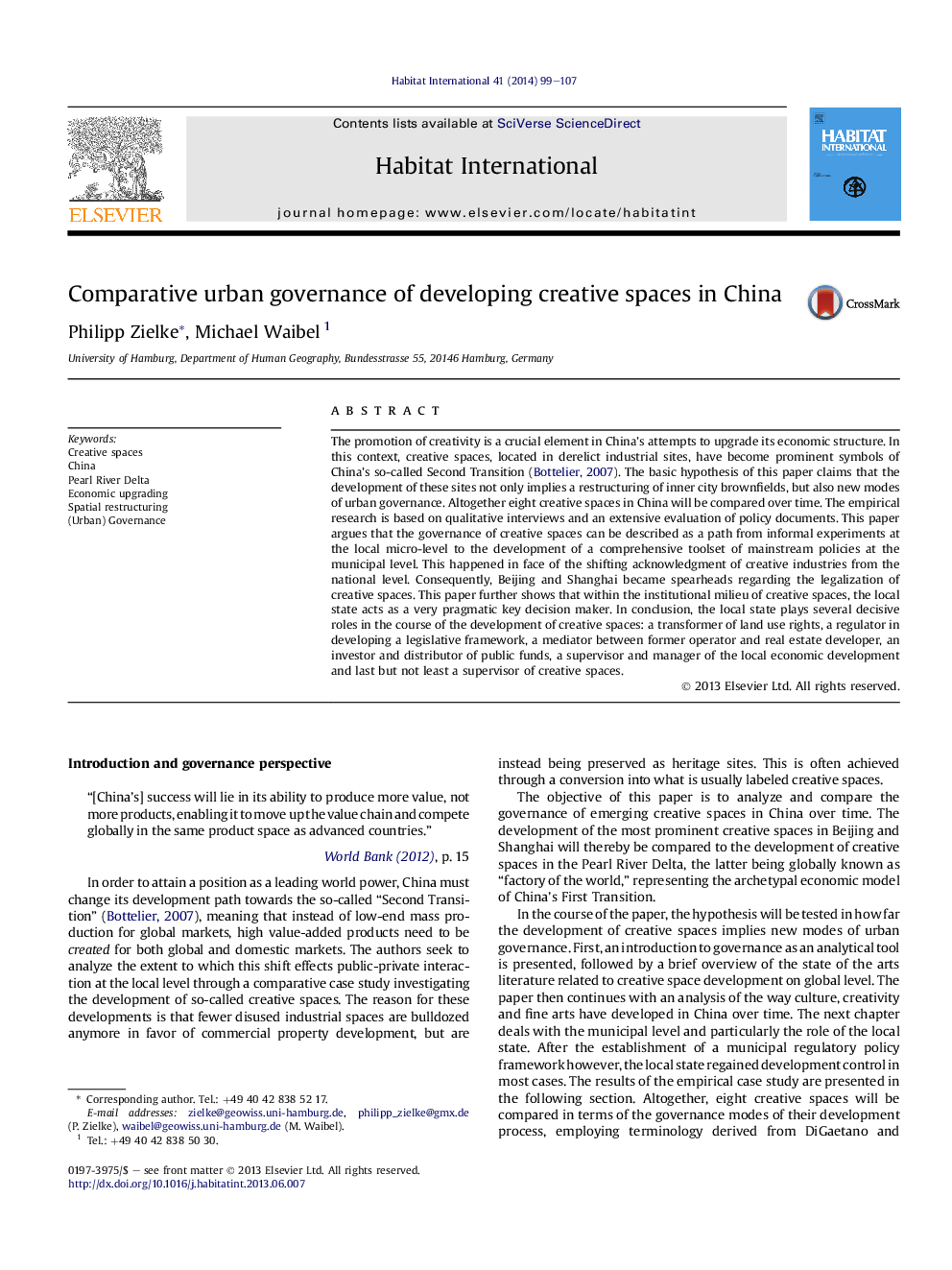| کد مقاله | کد نشریه | سال انتشار | مقاله انگلیسی | نسخه تمام متن |
|---|---|---|---|---|
| 1047848 | 1484501 | 2014 | 9 صفحه PDF | دانلود رایگان |
• Comparative analysis of developing creative spaces in China.
• Brownfield-development requires new modes of public-private interaction.
• Complex and hybrid modes of governance changing over time.
• Many roles of local state: regulator, mediator, investor, supervisor, operator.
The promotion of creativity is a crucial element in China's attempts to upgrade its economic structure. In this context, creative spaces, located in derelict industrial sites, have become prominent symbols of China's so-called Second Transition (Bottelier, 2007). The basic hypothesis of this paper claims that the development of these sites not only implies a restructuring of inner city brownfields, but also new modes of urban governance. Altogether eight creative spaces in China will be compared over time. The empirical research is based on qualitative interviews and an extensive evaluation of policy documents. This paper argues that the governance of creative spaces can be described as a path from informal experiments at the local micro-level to the development of a comprehensive toolset of mainstream policies at the municipal level. This happened in face of the shifting acknowledgment of creative industries from the national level. Consequently, Beijing and Shanghai became spearheads regarding the legalization of creative spaces. This paper further shows that within the institutional milieu of creative spaces, the local state acts as a very pragmatic key decision maker. In conclusion, the local state plays several decisive roles in the course of the development of creative spaces: a transformer of land use rights, a regulator in developing a legislative framework, a mediator between former operator and real estate developer, an investor and distributor of public funds, a supervisor and manager of the local economic development and last but not least a supervisor of creative spaces.
Journal: Habitat International - Volume 41, January 2014, Pages 99–107
